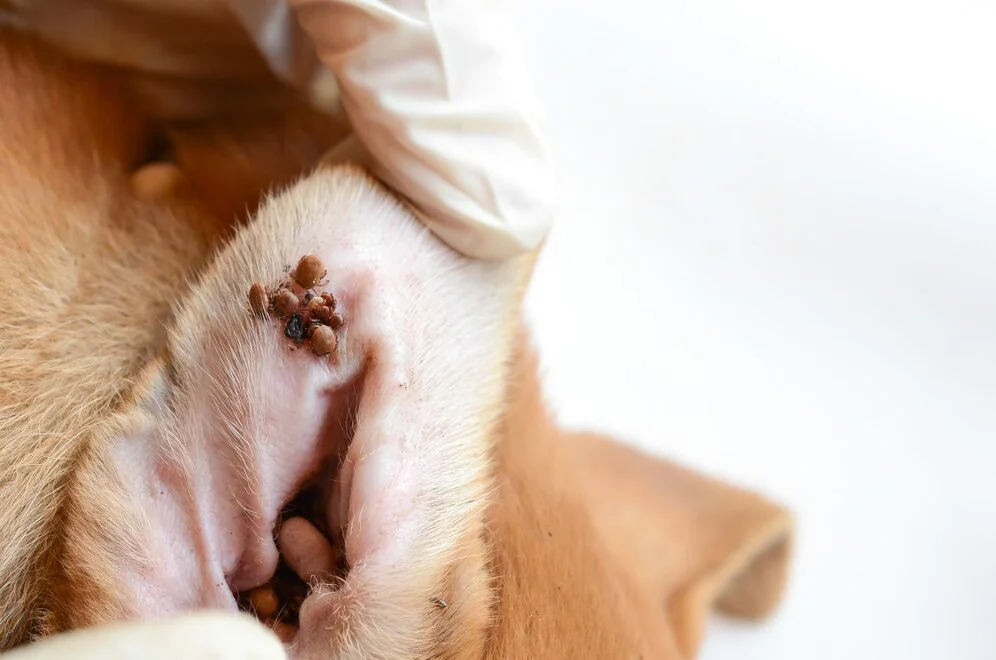-
P, 193, A, Ramakrishna Samadhi Rd,Kolkata- 700054
P, 193, A, Ramakrishna Samadhi Rd,Kolkata- 700054

Ear Mites can often be mistaken for ear infections in pets. Learn how to differentiate between the two, understand their causes, symptoms, and treatments, and ensure your pet receives the best care possible.
As a pet owner, noticing your furry friend scratching their ears or shaking their head can be concerning. Two common culprits behind such behavior are ear mites and ear infections. While they may exhibit similar symptoms, their causes, treatments, and implications differ significantly. Understanding these differences is crucial to ensure timely and appropriate care for your pet.

Ear Mites are tiny, spider-like parasites that infest the ear canals of animals, feeding on ear wax and oils. They are highly contagious and can spread rapidly among pets, especially in multi-pet households.
Ear mites are primarily transmitted through direct contact with an infected animal. They can also spread via contaminated bedding or grooming tools.
A veterinarian can diagnose ear mites by examining ear discharge under a microscope. Treatment typically involves:

Ear infections in pets can be caused by bacteria, yeast, or fungi. They often result from underlying issues like allergies, moisture buildup, or foreign bodies in the ear.
Common causes include:
Veterinarians diagnose ear infections through physical examination and may perform cytology to identify the causative agent. Treatment may involve:
| Aspect | Ear Mites | Ear Infections |
|---|---|---|
| Cause | Parasitic infestation | Bacterial, yeast, or fungal overgrowth |
| Contagiousness | Highly contagious among animals | Generally not contagious |
| Discharge | Dark, crumbly, coffee-ground-like | Yellow, brown, or bloody |
| Odor | Mild to none | Strong, foul smell |
| Treatment | Anti-parasitic medications | Antibiotics, antifungals, anti-inflammatories |

While rare, ear mites can occasionally affect humans, leading to itching and discomfort. Maintaining good hygiene and treating infected pets promptly minimizes this risk.
Observing the type of discharge and odor can provide clues. However, a definitive diagnosis requires a veterinary examination.
Yes, breeds with floppy ears or narrow ear canals are more susceptible due to reduced air circulation, which creates a moist environment conducive to infections.
If left untreated, severe ear infections can damage the ear canal and eardrum, potentially leading to hearing impairment.
It’s advisable to clean your pet’s ears once a week or as recommended by your veterinarian, especially if your pet is prone to ear issues.
Distinguishing between ear mites and ear infections is vital for the health and comfort of your pet. Both conditions, while treatable, require prompt attention to prevent complications. Regular monitoring, preventive care, and timely veterinary consultations are key to ensuring your pet’s well-being.
For those seeking expert veterinary services, it’s essential to consult with trusted professionals who can provide accurate diagnoses and effective treatments tailored to your pet’s needs.